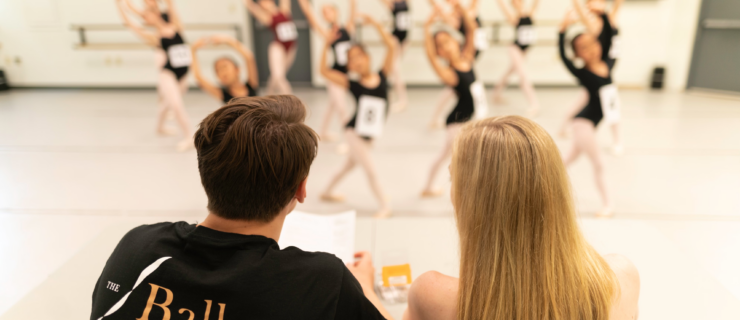4 Ways You Can Disrupt Dance Class Power Dynamics
There’s a reason why most dance classes are taught the same way—with one person leading and the rest of the room following—and it has a lot to do with how fruitful that relationship can be for dancers. When one person leads a room, dancers know exactly who to follow for direction.
But this classroom structure hinges on a pretty extreme power dynamic. Students typically get very little agency in the direction of their education, and, on the flip side, teachers determine what and how their students learn. Sometimes, young dancers may begin to feel limited by this unequal distribution of power—we’re often taught to dance silently, instead of speaking up.
Here are four ways to respectfully disrupt the power structure of your classroom, and get even more out of your dance training.
Ask questions
Don’t be afraid to ask questions, both in and outside of the dance studio. Eagerness is, after all, an important part of cultivating your artistry—and your teacher will surely appreciate your desire to learn.
More importantly, though, asking meaningful questions gives you agency in your dance education. By posing a question, you direct the conversation. You’re able to take a stake in what you’re learning, and how you’re learning it. Your question can also open conversations that other dancers—and, perhaps, your teacher—want to have, so don’t shy away from speaking up.
If you’re concerned about how to go about this in a respectful way, consider observing how your teacher responds to other dancers’ questions first. In the offhand chance that they’re not so open to questions during class, try speaking with them more privately—maybe after class, or via email. No matter what, if you feel your voice needs to be heard, you’re probably right.
Request time for improvisation
Conditioning the body to mirror movements is an important part of your training. But this physical work of mimicking another dancer is only one part of the artistic equation. It will likely only help you to refine, rather than define, your own unique way of moving.
So, what if your teacher hasn’t offered you the opportunity to explore movement of your own? Consider this: Request space and time at your studio, either during or outside of class, to develop your own movement vocabulary. Through improvisation, you’ll be able to discover what makes you unique. Plus, the request alone could signal to your teacher that you—and your classmates—may be ready for more exploratory work.
Respect the choreography, but inject your individuality
When you’re learning movement phrases in class, pay attention to the details. Listen carefully, and work to employ all of your teacher’s directives. By doing so, you will learn the choreography more quickly and show respect for your teacher and their artistic voice.
But once you’ve managed this, and you feel like you’ve mastered the objective of the phrase at hand, consider inserting elements of your personality into the choreography—without outright changing it. Find a way to make your movement unique. Sustain an arabesque for just an extra second, use your épaulement to tell a story, or create changes in the quality of your dancing. These small shifts will allow you to make the movement your own, and to insert more of your authentic self into the choreography.
Demonstrate appreciation
If your teacher is open to your attempts to shift the classroom dynamic, show them that you appreciate it. By and large, your dance teachers want to give you their best and their all, so be sensitive when you approach them—with questions, requests, or feedback—and be especially thankful if they’re receptive. Your kindness and consideration will go a long way in building a healthy and balanced relationship.




